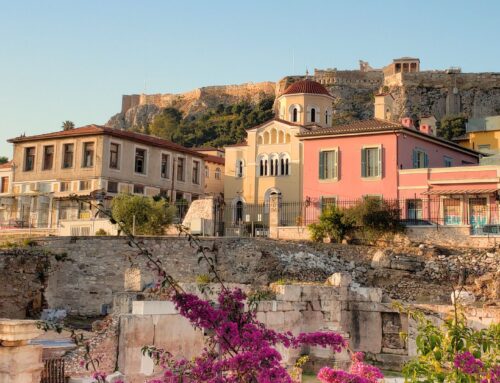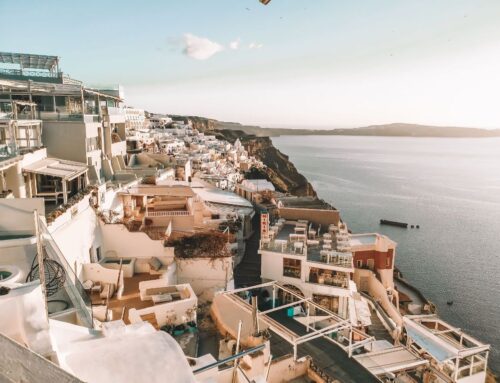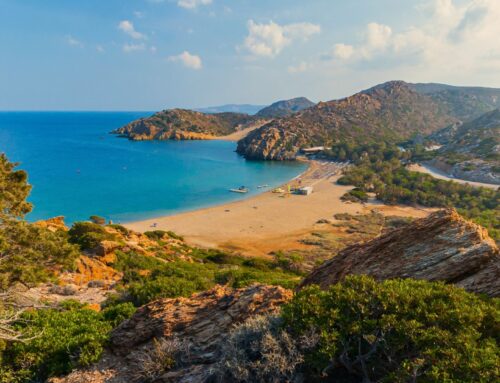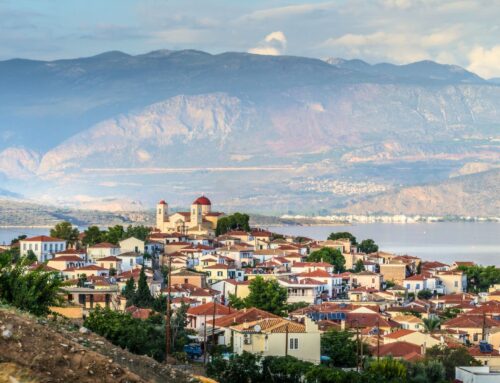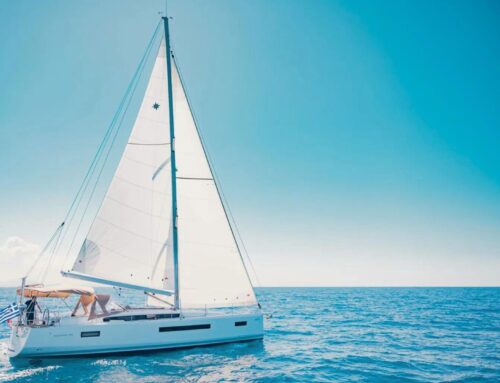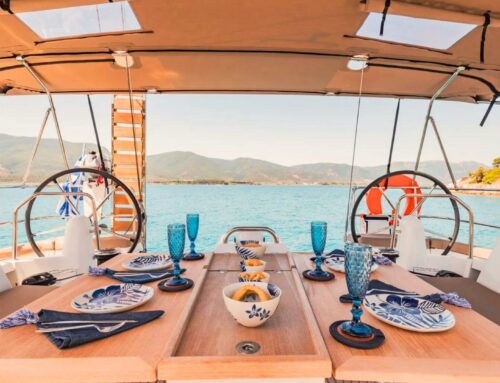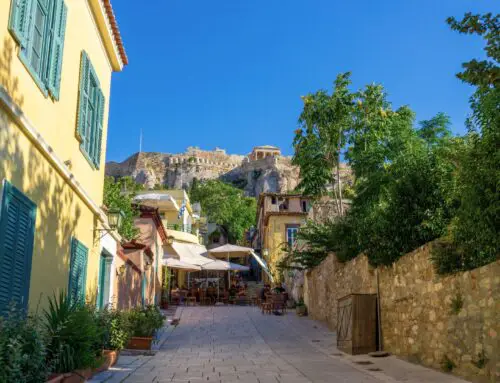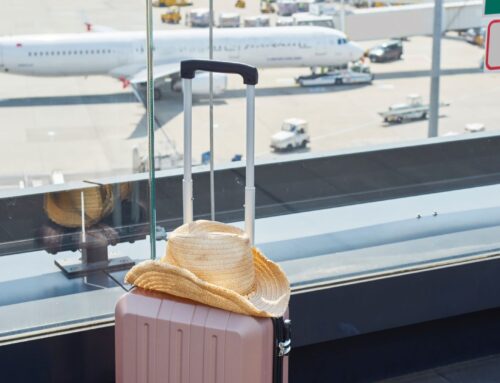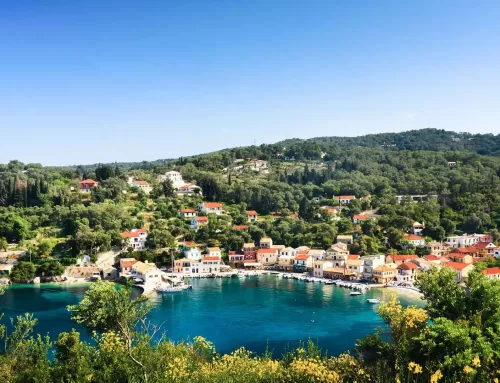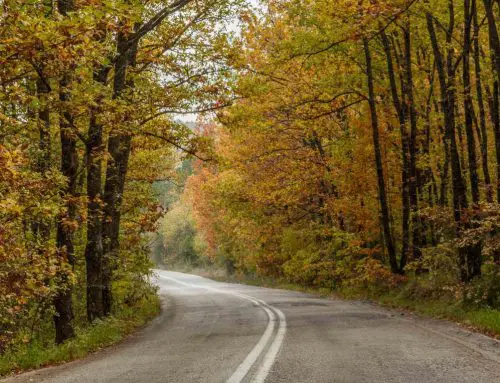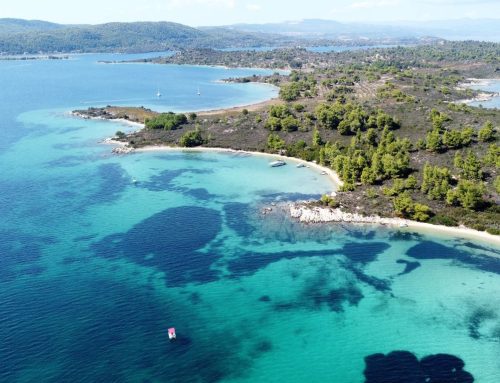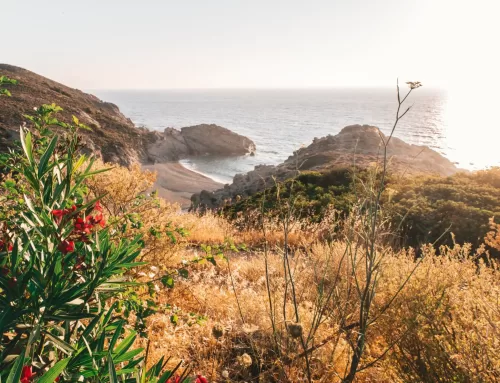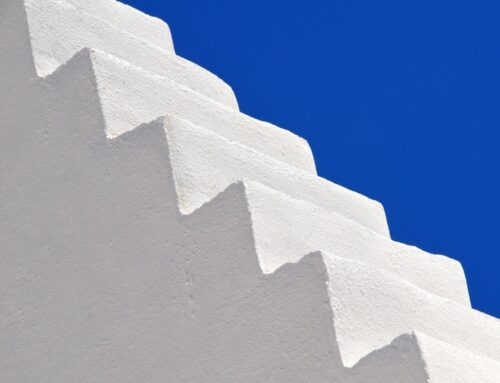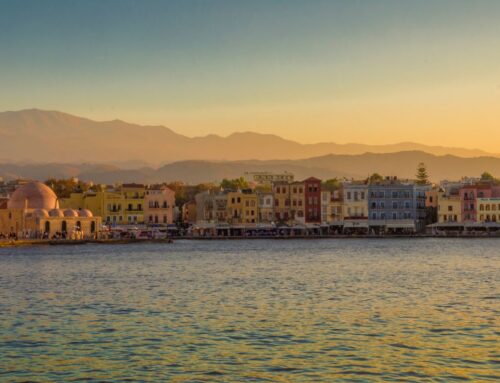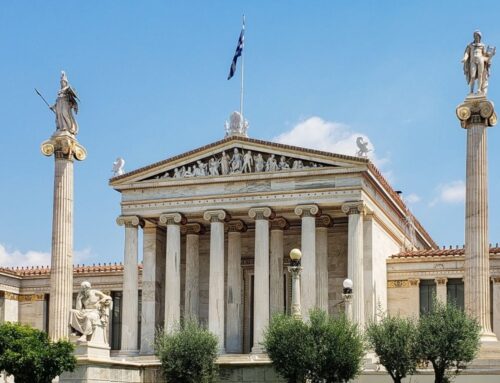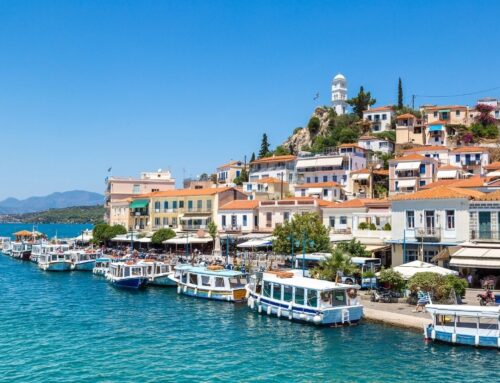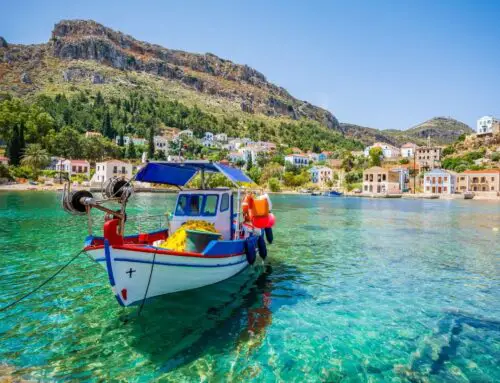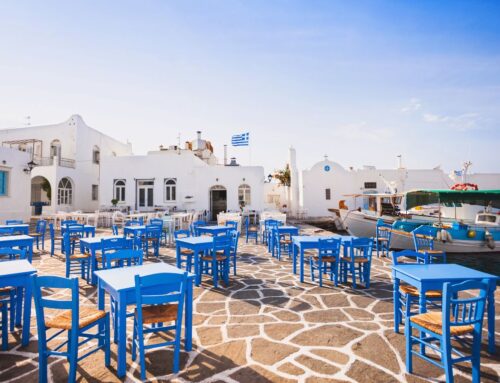South Chios Island Guide
South Chios Island Guide
☞ Table of Contents:
If you want to read more about our excursions on the central part of the island, read here
Table of Contents
The south part of the island, is where most visitors spend their time exploring medieval villages, spotting watchtowers and learning more about the unique product of mastiha.
This is our South Chios Island Guide.
KAMPOS
Heading south from “Hora” (the name reserved for an island’s main village) visitors will pass through one of the most distinctive and important areas of Chios island, Kampos.
The name, which literally translates to valley or plain, can be traced back many centuries, before the Genoese occupation between 1346- 1566. Located between the mountainous and dry Mastic villages in the southern coastline and the capital of the island mere kilometers away, Kampos area began to attract the wealthiest families of the island that established prolific trade routes, supplying luxury products such as mastic, silk and salt as well as wheat, vegetables and pomegranates. The Genoese period brought with it a change in the choice of production. The fertile and flat land of Kampos area was ideal for the cultivation of citrus fruits and soon the landscape was transformed into fruit barring orchards and high stone walls.
Nowadays, as you drive towards Kampos, the high terra-cotta coloured walls, are the first clue that you have reached the area. Used to protect the sensitive trees from dust and the fumes of cars going by as well as the prying eyes and hands of outsiders, unsuspecting visitors could very well drive by without realizing what hides behind these high walls.
Mastic trees at the museum area in Kampos area, Chios.
The mansions of Kampos, were homes to the elite of Chios, similar in fashion to villas found in Italy and while most were destroyed after subsequent natural disasters and fires, some remain today and are open to visitors.
One way to explore the area is through a bicycle tour, the best of which incorporate a visit into the old villas. If you choose to explore on your own, keep in mind that most of the mansions are by appointment only or open during certain hours.
Worth visiting in the area, is definitely the Museum of Citrus. The result of hard work, dedication and enthusiasm, the Museum is housed at a family estate dating back to 1742. To our surprise, when we called ahead for directions, we were told that entrance to the museum is free. The surrounding area is still a working facility for a variety of citrus products and there is a small cafe that offers coffee and delicacies. Drink and coffee orders come accompanied with the traditional spoon treat, lemon, orange or mandarin is the specialty of course!
The actual museum is small but offers a much needed insight into the history of the area and the importance of the citrus trade to the people of Chios. If you have time don’t skip watching a short documentary that features many locals reminiscing about growing up in the area and the changes that have taken place since. It is an interesting and quick lesson which will offer you a better insight when looking at the architecture and general landscape around you afterwards.
Delicious products on offer. Access to the museum is free and you can get to taste some of the sweets with your coffee if you chose to stay and relax under the shade.
BEACHES IN SOUTH CHIOS
The south part of the island has some of the most visited beaches. Apart from quantity, any visitor will be spoiled by the diversity on offer. From the volcanic black pebbles of Mavria Volia, to the quiet sandy beach of Karfas and the secluded waters of Agia Dinami.
In total, the south of Chios brags more than 15 beaches.
Total Beaches – South Chios
- Karfas
- Megas Limnionas
- Agia Fotia
- Katarraktis
- Vokaria
- Gridia
- Agios Giannis
- Lilikas
- Komi
- Mavra Volia
- Vroulidia
- Karinda
- Kato Fana
- Agia Dynami
- Salagona
- Avlonia
- Apothika
- Didima
From the Citrus Museum in Kampos area, the closest beaches are Karfas and Megas Limnionas.
Karfas
The most visited beach on the island and one of the few that can offer soft golden sand. This is an organized beach with plenty of amenities around to entertain old and young. Sunbeds, umbrellas, water sports, taverns and accommodation options are all walking distance.
A lovely beach where children get to play carefree and parents get to enjoy the sun and crystalline waters.
Soft sand and refreshing waters.
Megas Limnionas
Another popular option for families, especially those with younger children. The beach offers clear and shallow waters for our little friends and options for food, drink and activities all around.
One of our favourite dining options in the area, that we took full advantage of during our stay in Megas Limnionas, is Agyra Restaurant. Fresh food, fair prices and friendly service.
Driving south from Megas Limnionas there are three more refreshing beach options.
Agia Foteini
Katarraktis
Vokaria
A small and unorganized beach, located a 5 min drive from the village of Nenita. Soft small pebbles and quiet waters await visitors in this relaxing little spot. The beach is not reachable by public transport and there is no umbrellas or sunbeds to rent here. A small cafe/restaurant operates to offer cold drinks and a few specialties such as shrimp pasta and fresh mussels. Sometimes, it is also possible to buy fish straight from the fishermen that dock their boats in this little bay.
Continuing further on to reach the south-eastern most point on the island, we pass through several more beach options.
Gridia
This is one of those off the beaten path places that only a few people would venture out too. Very pebbly and almost completely deserted you are guaranteed to have it all to yourself apart from some fish and the occasional fisherman. A small tavern by the village completes the picturesque scene.
Agios Giannis
With only 16 all year residents in this small village, this wide pebbly beach is almost always a perfect private and quiet spot. A few restaurants and cafes in the area and the small chapel of Saint John from which the beach was named.
Lilikas
Small pebbles, a few umbrellas and sunbeds available and a handful of resorts and hotels in the area. The small village settlement that leads to the bay has plenty of options for food and drink to offer visitors that have spend the day relaxing in these calm waters.
Komi
A budding area of the island, with a cosmopolitan feel, popular amongst the youth, tourists and locals. Komi beach has a wide selection of beach bars, restaurants, cafes and activity options and a calm and welcoming environment for visitors to relax in. Easily accessible and suitable for all ages, children can look forward to careless playing on the golden sand and splashing around the shallow waters.
Mavra Volia
The most well-known beach on the islands owes its popularity to the distinctive volcanic pebbles that make up its sea bed and coast. The waters, deep, dark and usually quite cold reflect the colour of the pebbles offering a unique spectacle.
Get there early or late evening to avoid scorching your feet on the burning rocks. Sunbathing is definitely an option but instead of sand prepare for a hot-stone-massage type of experience.
A different sight at Mavra (Black) Volia. Don’t forget to use the hot stones to release back pain and tension.
Vroulidia
To reach this heavenly spot, visitors will need to drive through a narrow and steep road. The sides of the street are adorned with tiny baby mastic trees, and after every turn glimpses of the Aegean water are getting closer and closer.
Only 15min from the must-visit village of Pyrgi, the beach is at the bottom of a long flight of steps. There is a small canteen at the top of the hill which was our first stop. Pre-order food before making your way down to the beach. Fifteen minutes later, a sufficient time to cool down at the beautiful Mediterranean waters, a small cable car brought down our food order.
No need to walk up and down these stairs more than you need to!
Even at four o clock in the middle of the summer, the area offered sufficient natural shade from the high cliffs surrounding us. No umbrellas or sunbeds available.
Vroulidia is located almost exactly at the point where the south part meets the eastern part of the island. From then on, the next cluster of bays on the island is towards the southwestern point.
Karinda
This is another small, pebbly and deserted beach located close to the village of Pyrgi and the Cave of Olympi. Road access can be tricky for ordinary cars but once there you are guaranteed a secluded and relaxing spot by the water. A small tavern operates nearby.
Kato Fana
A small beach with soft sand and small pebbles but no organized umbrellas or sunbeds on offer. The area and village of Kato Fana has archaeological and religious significance as it was found to be the place of a temple dedicated to the god Apollo. In the many centuries since then, the area retained religious significance and was a place of worship during the later Byzantine times.
A secluded little spot awaits you after the steps.
Agia Dynami
This one is my personal favourite on the island and I look forward to many more visits in the near future. Only a short drive away from Pyrgi or Mesta and very close to the cave of Olympi. Driving towards the little bay, a spot of turquoise blue catches your attention. A small white chapel perched on one corner of the bay and small bushes and trees spread around the landscape. No umbrellas or sunbeds spoil this scenery.
In peak summer season, expect to see no more than 10 people sharing this little piece of heaven with you. If you are feeling up to it, there many nearby bays you can swim out to. Otherwise relaxing under the tree shade is an ideal option.
Salagona
Α wide beach with small white pebbles and sand and shallow, turquoise waters that attracts more and more visitors each year. A short drive away from Mesta this beach is also unique in the fact that a freshwater lake has formed in the space between the sea and the lush vegetation.
To find the beach follow a well-maintained dirt road about a kilometre after passing the village of Olympi.
Avlonia
Crystal clear deep waters, soft pebbles and tranquillity. Visitors most often seek out this beach haven to avoid the crows and enjoy the clean waters. Strong north winds are not unheard of in this spot so be prepared to enjoy taming the waves. There are no amenities nearby so visitors are advised to bring plenty of food and water so as to enjoy this area appropriately.
What beautiful waters, what special scenery!
Apothika
The last beach on the southern end of the island is Apothika bay. An unspoiled slice of paradise that has remained a favourite among visitors and locals of the area. Take the short road leading to the beach from the parking spot and set up for the day. No amenities in the area apart from a small bar/canteen which adds to the total feel of relaxation and tranquillity. A small bay not far from the main beach can be reached by water, where you can sit and enjoy the calm, refreshing waters.
A diving center and water sport activities is also in operation so you can explore the bay by renting kayaks, paddle-boards or snorkelling.
Didima
Up and around the west southern point of the island and driving north towards Lithi, we have Didima beach. Τhe name translates to “twins” in Greek, which becomes obvious the second you reach this spot. Two identical beaches, side by side, separated only by a short rocky hill in the middle. The waters, clear, shallow and mesmerizing, perfect for snorkeling and exploring adventures.
VILLAGES
The south part of Chios is well known for a variety of reasons. One, however, stands above the rest and continues to be associated with the island of Chios in general, it’s history and the livelihood of its residents. The Mastic Villages!
Twenty four in total and often referred to as either Mastiha villages or Castle villages (Kastrohoria), they offer any visitor a unique insight into the process of mastic production, from cultivation, to harvest and the products that it can be used in.
The trade of mastic was so prosperous that it required the villages to be built in remote and hard to detect locations high on the mountains. That way incoming raiders from the sea could be spotted from far way. The village layout followed this deceiving philosophy, built in a labyrinth style and with many elaborate techniques used to evade and confuse pirates.
Close attention to detail is needed here.
From the many villages in the area, Pyrgi, Mesta are the two most visited and well preserved.
Pyrgi
In Pyrgi, prepare to witness the sight of a unique architectural style, “xysta”. Those black and white patterns that adorn the house walls have become synonymous with this area and attract hundreds of visitors that wander the narrow side streets, exploring in awe and capturing photos.
These strange motifs usually start appearing half-way to the entrance door and continue until the top of the wall. They are made by piling a layer of black sand from the volcanic beach Mavra Volia and white plastering sand.
Medieval Mastic Villages, Chios.
Mesta
This little village could very well be a time capsule for visitors seeking to discover how inhabitants of the village lived years ago. There are narrow side streets and wide arches that connect houses already built to close to each other, for protection of course!
The New Church of the Archangels is centrally located and close to the main square with options for food and drink. The Old Church of the Archangels that dates to approximately 1412, is located nearby and can be visited as part of a guided tour. Notice the slightly shortened Main Entrance leading into the old church, a reminder of humility and humbleness.
Small red tomatoes are hanging to dry. This variety grows without water and can last all year around if dried properly.
OTHER THINGS TO SEE AND DO
Cave of Olympi
This cave is located on the southern part of the island and can be combined with a visit to the medieval villages of Mesta and Pyrgi as well as some of the stunning beaches in the area.
Stalactite and stalagmite formations can be seen at a depth of over 30m – it is however not accessible by all due to a large number of steep steps.
Mastic Museum
The only place in the world where you can find this unique product is Chios island. So it is without surprise that visiting the Mastic Museum should be at the top of the list of most visitors. Guests will have the opportunity to get up and close to mastic trees, and learn about the cultivation and harvesting process of the resin that leads us to the product of mastic.
Mastic continues to be recognized as a natural medicine and a product of interest for the wide therapeutic properties it has showcased.
☞ Related: 5 Reasons: Why You Need To Visit Chios
Close up of mastic resin that will eventually drop onto the prepared ground and be swiftly collected.
Botanical Garden
On the way back towards Hora, you might want to stop at the Botanical Garden. A short distance away from the village of Nenita the space is open all year around and offers a small selection of food and refreshments. The main reason to visit is the stunning view of the Aegean sea sprawling beneath your feet. Visitors can also chose to participate in a guided tour of the plant nursery in the garden. As it stands, this is the only botanical garden in the world that only includes plants native to the Aegean.
Tickets are only 2 euro for adults and 1 for children.
We want to thank Elias Siolis from Real Chios for his invaluable advice in planning our trip to Chios island. We experienced true passion, commitment to hospitality and a pure desire to showcase the beauty of this land. We will be back!
*Disclaimer: This page might include affiliate links. If you decide to book something through one of them, I might get a little bonus, but it won't cost you anything extra.*

